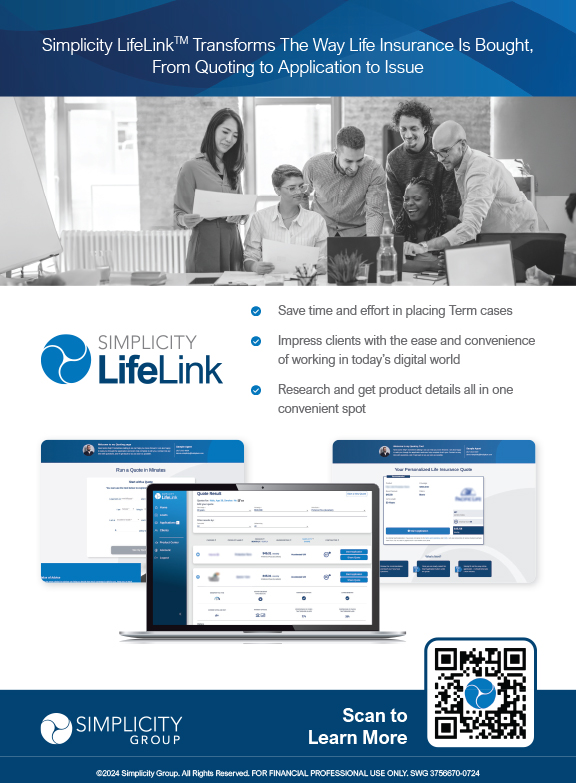Medicaid is destroying state budgets like a computer virus, and it is a driving force behind the budget shortfalls that most states are facing today.
• State administered Medicaid is the nation’s primary funding source for many needing long term care; in 2008, 42 percent of the $215 billion spent for long term care services in this country was paid by Medicaid.1
• Medicaid consumes an average of 20 percent of state budgets today2 and that is projected to grow to 35 percent by 2030.3
• The biggest driver behind the growth in the Medicaid budget is long term care, which consumes one-third of our Medicaid dollars, and get this-by 2030, states are expected to be spending half of their Medicaid dollars on long term care!4
• Last, a typical scenario for states is that almost two-thirds of long term care dollars go to the aged and disabled, who represent only one-fourth of Medicaid recipients.5
Most Americans are facing a critical shortage of retirement savings and income. With savings so low and the odds of needing care so high, you can see a high probability of Americans turning to Medicaid for long term care support-unless we do something fast.
Consider that we have 155 million people who are employed in the United States and 38 million people over age 65 today.6,7 This low ratio of taxpayers compared to every resident with the potential of needing Medicaid dollars for long term care creates an untenable situation.
Fortunately, there is a solution to head off this perfect storm, but it will only be successful if we work together-starting today.
As an insurance professional who is equipped to sell long term care insurance, you have a unique opportunity to make a difference by educating your clients about the necessity to plan ahead for long term care.
The Partnership for Long Term Care paves the way for this essential planning. By purchasing a long term care insurance policy that meets their state’s LTC partnership criteria, policyholders who need to turn to Medicaid for help can protect assets equal to the benefits they paid for that policy rather than spending down to Medicaid asset requirements, which is about $2,000 for an individual. (To see exact numbers for your state, you can go to my website-www.ltcconsultants.com-and click on “2010 Updates,” which is located in the lower right corner of the home page, then click on “Medicaid” and you will be taken to a chart with the numbers for all 50 states.)
Quick Medicaid lesson: Some states divide the assets in half and give the healthy spouse that half up to a maximum of $109,560 for 2010. Some states also have a minimum of $21,912 (example: $30,000 in assets means the healthy spouse will get $21,912, not $15,000.) Other states give the healthy spouse the maximum, no questions asked. To know how your state behaves, look at the second column in the chart I referred to earlier, located on my website. If the $21,912 number is there, you know the state applies the minimum as I explained in my $30,000 example. If the $109,560 is there, it’s one of the more “liberal” states where the healthy spouse is automatically given that amount.
Regardless of which method is used, after the proper amount is allocated to the healthy spouse, the remaining assets have to be spent down for the spouse who needs long term care-and that’s typically $2,000.
Partnership plans change that game significantly, and following are some examples:
Example 1: A single person applying for Medicaid’s long term care benefit must spend assets down to $2,000. If he applied for Medicaid after receiving $100,000 in long term care insurance benefits, he would be able to keep $102,000 in assets.
Example 2: A couple with $200,000 and one Medicaid applicant in a state that uses the 50/50 allocation. The healthy spouse could keep half ($100,000) and the spouse who needs long term care would spend $98,000 down to the $2,000 an individual is allowed to keep. If they owned a partnership policy that paid $100,000 in benefits, it would not be necessary to spend down any assets when applying for Medicaid.
Here’s where it’s really cool. Let’s say they have $300,000 in assets. Half of that is $150,000, which exceeds the maximum. So the healthy spouse would keep the maximum of $109,560 plus the $100,000 provided by the asset protection feature of the partnership plan for a total of $209,560.
What if the policy had paid out $200,000 or $300,000? You can see there will be many situations in which no spend-down is required for the LTC spouse to move to Medicaid when the benefits in the policy are either exhausted or when the family can no longer make up the difference between what the benefits provide and the cost of care. (Only a couple of states require the benefits to be exhausted before applying for Medicaid-Montana and Oklahoma.)8
What are the requirements to have an approved partnership policy? (1) the policy must be tax-qualified per IRC 7702(b); and (2) applicants must purchase an inflation benefit* based on their age at application. The Deficit Reduction Act says it has to be compound up to age 61, some form of inflation ages 61 through 75, and no inflation benefit required at age 76 forward. However, most states have customized that to put in some minimum requirements. For example, here is what Oklahoma did:
• Under age 61: at least 3 percent compounded annually or a rate that is equal to the consumer price index for all items.
• Ages 61 through 75: automatic annual inflation of at least 3 percent simple or a rate that is equal to the consumer price index for all items.
• Age 76 or older: the insured is not required to purchase inflation protection. (The Oklahoma insurance commissioner may approve an alternative index to be used in place of the CPI or alternative inflation programs.)
Now listen carefully. What many people (and producers) don’t realize is that if they buy long term care insurance with the appropriate inflation benefit (based on the above figures) from an insurance company that is participating in the Oklahoma Long Term Care Partnership, they receive a partnership policy whether they asked for one or not-and whether or not you, the producer, meant to sell them one. Can you see how most LTC insurance policies sold will eventually be partnership policies?
Almost three million Oklahomans are over age 18, but only 2.3 percent of them (62,000) have long term care insurance.9,10 This is a typical ratio of people over 18 compared to the number of LTC insurance policies sold in that state, with the highest being North Dakota with about a 7 percent market penetration.
As an insurance professional equipped to sell policies approved by your state’s long term care partnership, you have an extraordinary opportunity to change these numbers dramatically over the next decade, while enjoying a tremendous increase in your annual income.
The Partnership for Long-Term Care creates an unprecedented opportunity to educate clients and prospects that buying an approved long term care insurance plan provides private-pay choices when care is needed and asset protection when the insurance benefits run out and the insured has to turn to Medicaid for help.
So here’s the deal. Forty-six states went into the new fiscal year with a budget shortfall, which can only increase in severity as more baby boomers access Medicaid for their long term care.11 Helping as many people in your state as possible get long term care insurance in the next decade can provide much needed relief to the state budget and decrease the pressure to raise state taxes.
Wondering what your state is doing with the LTC partnership? Most states have implemented a partnership or are in some stage of implementation: Alabama, Arizona, Arkansas, Colorado, Florida, Georgia, Idaho, Iowa, Kansas, Kentucky, Louisiana, Maine, Maryland, Minnesota, Montana, Missouri, Nebraska, Nevada, New Hampshire, New Jersey, North Carolina, North Dakota, Ohio, Oklahoma, Oregon, Pennsylvania, Rhode Island, South Carolina, South Dakota, Tennessee, Texas, Vermont, Virginia, Wisconsin and Wyoming.
North Carolina and West Virginia have just filed the State Plan Amendment to their Medicaid program with the Center for Medicare and Medicaid Services (CMS) that is required to implement a partnership, so it will be several months before that approval is granted and the state can open the doors for carriers to send their policies in to be approved as partnership-compliant.
Vermont is still trying to get the state legislation passed to implement a partnership. It will be reintroduced in 2011.
Illinois and Washington haven’t submitted a state plan amendment yet, but it looks good that it may happen within a year.
States that aren’t close at all yet are Alaska, Delaware, Hawaii, Massachusetts, Michigan, Mississippi, New Mexico and Utah. If you’re wanting to try to find a medicare plan within these states then you will have to go private and look for the various plans available to you such as this provider for Medicare in Mississippi should you reside in Mississippi.
You must take a course to be able to sell partnership policies in your state and in other partnership states in which you hold a non-resident license. Please do not treat this course as just a requirement. Approach it as an opportunity to really solidify your foundation of knowledge about long term care and LTC insurance and the surrounding issues!
Most of us don’t take a course or study anything for any length of time unless we are forced to do so, so now that you are, make the most of it! You will sell a lot more if you are confident in your information, and your clients will love you for selling them the appropriate benefits with the asset protection feature added on as a bonus.
1. Centers for Medicare and Medicaid Services, 2008 numbers, released January 2010.
2. National Association of State Budget Officers, “2008 State Expenditure Report,” “Table 28: Medicaid Expenditures” and “Table 29: Medicaid Expenditures as a Percent of Total Expenditures,” fall 2009.
3. Deloitte Center for Health Solution, “Medicaid Long-Term Care: The Ticking Time Bomb,” 2010.
4. Ibid.
5. Kaiser Foundation State Medicaid Fact Sheets (www.kff.org).
6. Bureau of Labor Statistics, December 10, 2009.
7. Census Bureau.
8. State specific information contained in Phil Sullivan and Phyllis Shelton’s “Partnership Certification Training.”
9. NAIC, “2009 LTCI Experience Reports.”
10. Center of Budget and Policy Priorities, “Recession Continues to Batter State Budgets; State Responses Could Slow Recovery,” updated July 15, 2010, Elizabeth McNichol, Phil Oliff, and Nicholas Johnson.


























